![]()
![]()
![]()
Use LEFT and RIGHT arrow keys to navigate between flashcards;
Use UP and DOWN arrow keys to flip the card;
H to show hint;
A reads text to speech;
8 Cards in this Set
- Front
- Back
- 3rd side (hint)
|
Earthquake |
• A sudden or violent movement within the earth's lithosphere that is followed by a series of shocks. • Happens when the earth's plates move and causes the ground to shake. |
Natural disaster, caused by jigsaw pieces. |
|
|
Epicentre |
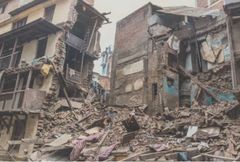
The point directly above the centre of the earthquake on the earth's surface. |
Above or below? |
|
|
Focus |
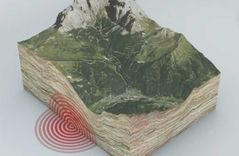
• Where the pressure is released underground and where the energy radiates out from. • This is the place with the strongest waves that cause the most damage. • It is the origin of the earthquake. •Also called the hypocentre of an earthquake. |
Strongest or weakest? Above or below? What does it produce? |
|
|
Seismic waves |

• Energy is released from the focus in seismic waves. • The most damage will occur at the places where the shock waves are strongest (closest to the epicentre). |
Shock waves |
|
|
Divergent/Constructive boundary/margin |
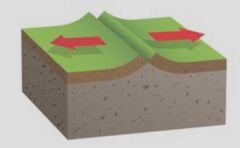
Pressure builds up from cracks in the plates where the move apart. |
✌🏼 |
|
|
Convergent boundary/margin |
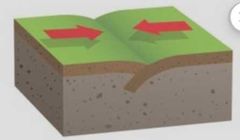
When a plate gets stuck as it moves under another. |
Under, moving together 🤞🏻 |
|
|
Conservative/Transform boundary/margin |
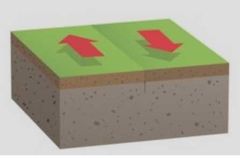
When plates rub against each other, friction builds up between them because they aren't smooth. |
Rubs |
|
|
Caused by plates jerking past eachother |

• As plates move past each other, pressure builds up from the friction between them. • When the pressure is sufficient, the plates give way. This causes the plates to jerk past each other and the ground to shake. |
2 plates jerk, friction, pressure |

